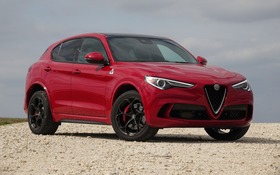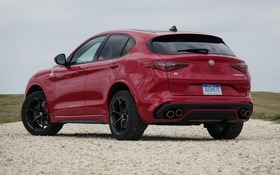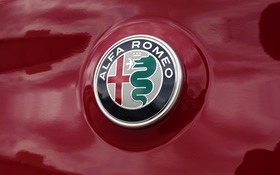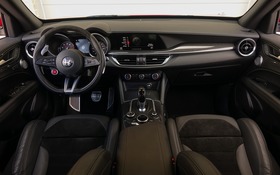2018 Alfa Romeo Stelvio Quadrifoglio: A Wild Beast in an Italian Suit
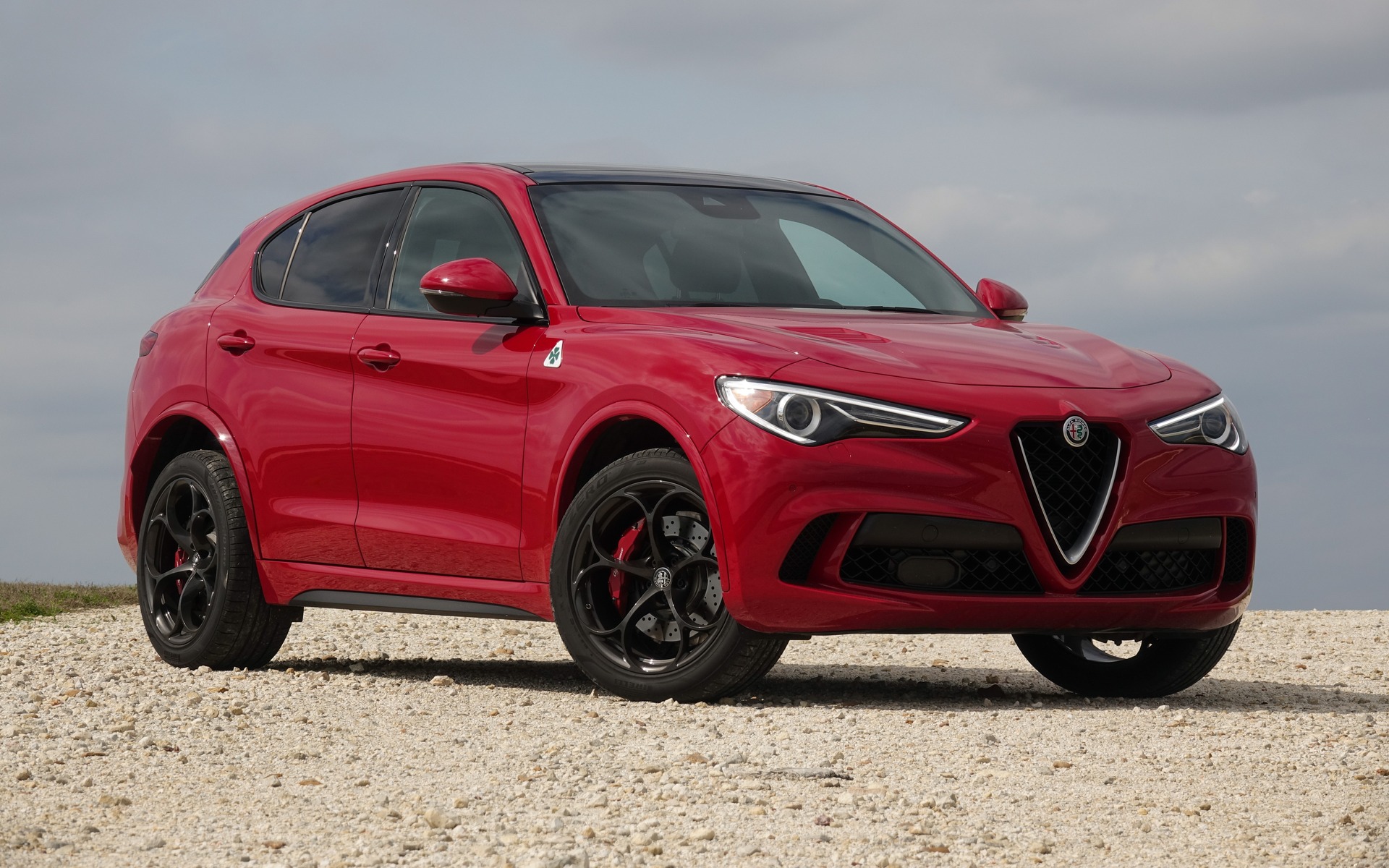
| Strong points |
|
|---|---|
| Weak points |
|
AUSTIN, Texas – With sport utility vehicles so immensely popular, everyone from the most run-of-the-mill manufacturers to the top luxury brands wants a piece of the action. Porsche’s resounding success with the Cayenne and second home run with the more compact and even sportier Macan only reinforced that desire.
This success has not gone unnoticed by Alfa Romeo, now in the fourth year of its return to North America. After the 4C—a pure sports car—and the Giulia sedans, the Italian manufacturer is now introducing the Stelvio, its first-ever SUV in more than one hundred years of history.
- Also: 2018 Alfa Romeo Stelvio: The Italian-Style SUV
- Also: Alfa Romeo Announces Pricing for new Stelvio SUV
The name is borrowed from the Alps’ second highest pass at 2750 metres. The road, which is 19 kilometres long and peppered with 48 bends, is highly sought after by large manufacturers who come to test out the power and stamina of the brakes on their prototypes.
The first products in this series, the Stelvio and Stelvio Ti, have been available in Quebec since last fall. Built on a version of the Giorgio architecture that already underpins all Giulia sedans, the Stelvio and Stelvio Ti are powered by a turbocharged, 2.0-litre four-cylinder engine that delivers 280 horsepower. Paired with an eight-speed automatic gearbox and Q4 all-wheel drive, it propels the Stelvio Ti Sport from 0 to 100 km/h in 5.75 seconds—figure that has been duly verified.
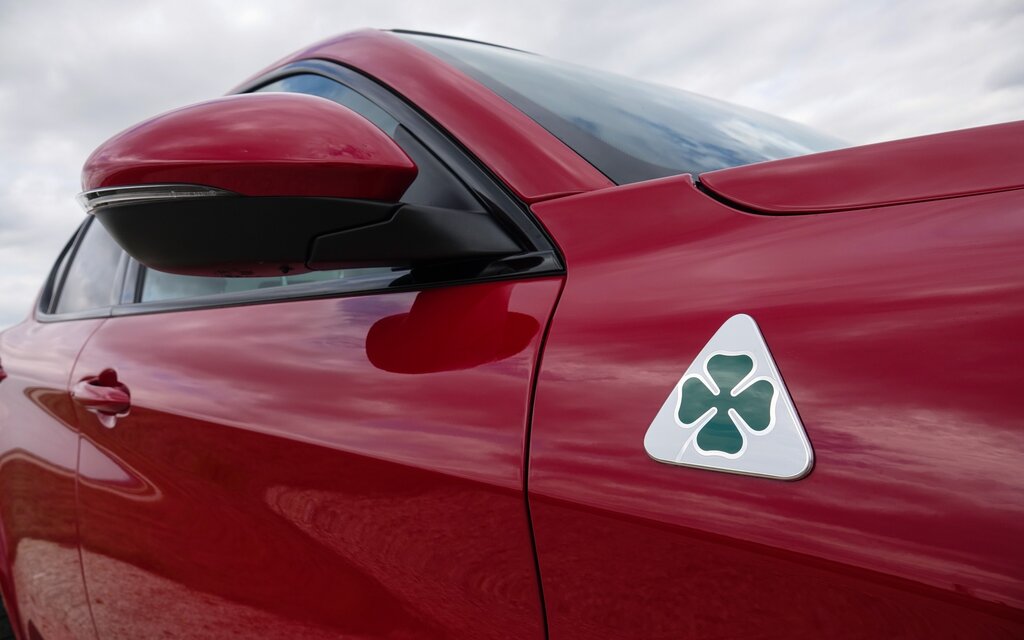
Enter the Extraordinary
Now that the introductions are out of the way, Alfa Romeo is moving on to more serious matters, as it did with its Giulia sedan, by finally offering us a Quadrifoglio version of the Stelvio. At Alfa Romeo, its code name is QV (for “Quadrifoglio Verde”) with the lucky green four-leaf clover logo that its race cars and high-performance models always bear.
The Stelvio Quadrifoglio is worthy of this famous logo, benefitting as it does from the most powerful engine ever installed in an Alfa Romeo production model: a twin-turbo, 2.9-litre V6 that delivers 505 horsepower at 6500 rpm as well as 443 lb.-ft. of torque over a range of 2500 to 5500 rpm.
This exceptional engine is shared by the Stelvio QV and the Giulia of the same name. It’s derived from the Ferrari 488’s engine, a twin-turbo 3.9-litre V8. The Stelvio’s chief engineer, the young Italian Andrea Zizak, tells us that his team paid very close attention to the exhaust sound and even the sputtering that you hear when shifting gears in flat-out acceleration.Just for the fun of it.
Italian Style
The uncluttered body design is superb. The Quadrifoglio’s fenders are wider and curvier than those of its siblings, ensuring proper coverage of its wider tires, which are mounted on black alloy rims. The bottom of its grille has been redesigned to integrate large side air intakes and a black rear shield frames the nickel-plated exhaust tips. All the body panels are aluminum, except at the lower rear, where steel is used.
In the cabin, we like the carbon fibre on the console, dashboard and inner doors. There’s leather and Alcantara on the impeccable optional sport steering wheel, where the start button, mounted on the left, is red rather than black in the Quadrifoglio versions.
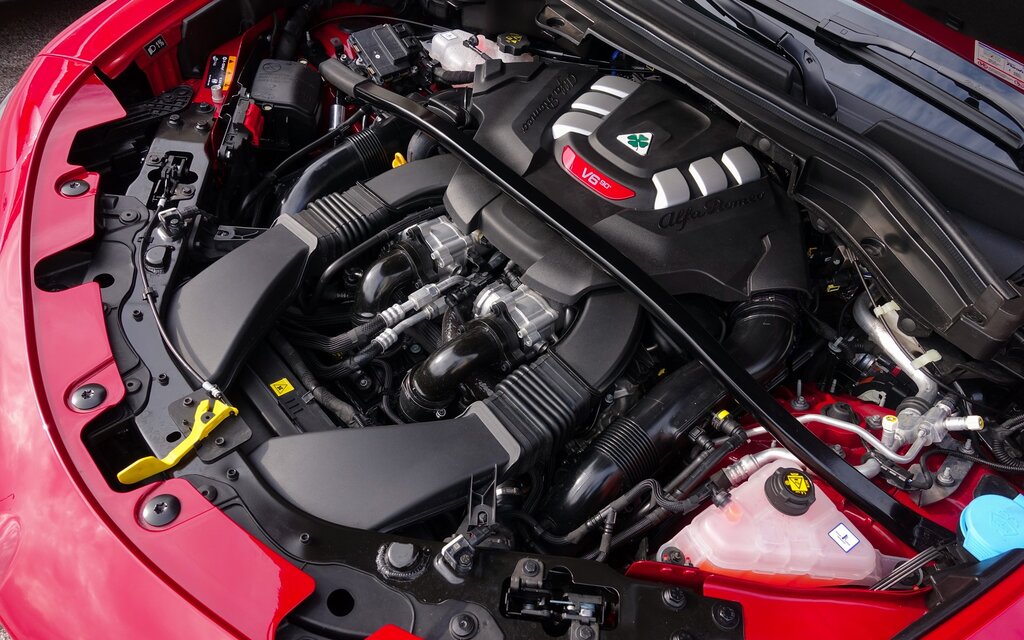
Armed with sturdier versions of the ZF automatic gearbox and Q4 all-wheel drive found in other Stelvios, the QV reaches 60 miles per hour in 3.6 seconds—that’s 0.3 seconds better than promised. I’d bet that its 0-100 km/h time would be 3.8 seconds, and I’m going to test my theory as soon as I get a chance. That would be the fastest acceleration of the several hundred SUVs that I’ve test driven over the years.
The Stelvio QV already owns the unofficial title of fastest production SUV in the world. This comes after taking on the famous north loop (Nordschleife) of the Nürburgring in 7 minutes and 51.7 seconds last fall with Italian pilot Fabio Francia at the wheel. That's eight seconds faster than the more powerful, but heavier Porsche Cayenne Turbo S.
Split Personality
On Texas roads, the beast is very civilized in N (normal), A (advanced efficiency) or Eco driving modes—and even in D (dynamic) which makes everything a little more intense. With springs 27% firmer in front and 16% firmer in back, the ride is very stiff, but never harsh, and you hardly hear a whir of wind from the side windows—not even when rolling at the 80 mph (129 km/h) limit of Texas highways. However, the automatic emergency braking is too sensitive in town. Expect to be quite taken aback the first time it happens.
I instantly loved the optional carbon fibre shell Sparco seats, which are lighter and only height adjustable. All the Stelvio QVs driven on the 5.5-km Circuit of The Americas (COTA) were also equipped with optional brakes with bigger and more resistant carbon ceramic discs.
For the track, the obvious choice is Race mode, which applies the firmest and sharpest settings for the power steering, suspension, electronic accelerator and gearbox while liberating the exhaust and deactivating the stability control system. And yet, right from the first lap, I was surprised by the heavy feeling and body roll in curves.
The Stelvio QV is 216 kilogams heavier than its sister the Giulia because of its all-wheel drive. It weighs in at a hefty 1978 kg. The front/rear weight distribution remains perfect at 50/50, but the centre of gravity is much higher.
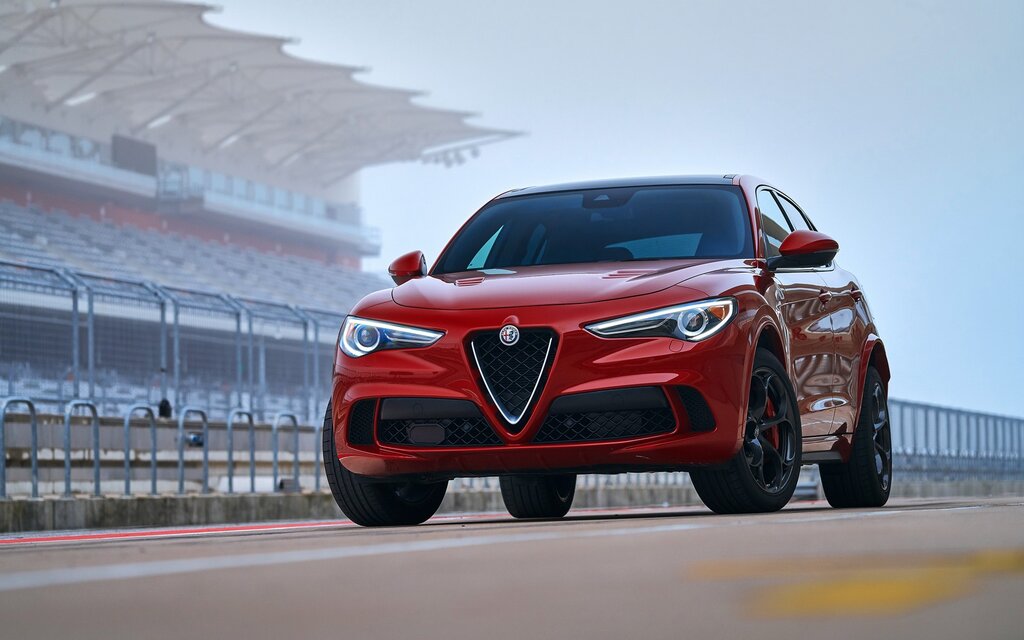
More Fun
The Stelvio enters corners without the slightest hesitation with its ultrafast steering, reduced to 12:1. That goes double for the QV, with its wider 245/45 tires in front and 285/40 tires in back, mounted on 20-inch rims. When entering a curve, the front begins to slide at the slightest increase in speed and the rear will fishtail as soon as you give it gas upon exiting the curve. The first time, anyway.
As you do more laps, you’ll end up using the Quadrifoglio’s balance and excellent actuation more effectively. The all-wheel drive sends 100% of torque to the rear wheels automatically, supported by a limited-slip torque vectoring differential, but it can transfer up to 60% of torque to the front wheels as needed. On the track, the carbon brakes proved powerful and resistant when doing three consecutive laps without almost any break. And the sound of the four exhausts is pure joy, if you like mechanical things even a little bit.
The Stelvio Quadrifoglio is elegant, classic, comfortable, reasonably practical and quite frankly, exciting to drive to the limit, if the circumstances allow it. Its flamboyant nature is nice change from its German rivals, as gifted as they may be. Let’s hope that it proves to be as reliable as it is desirable.


